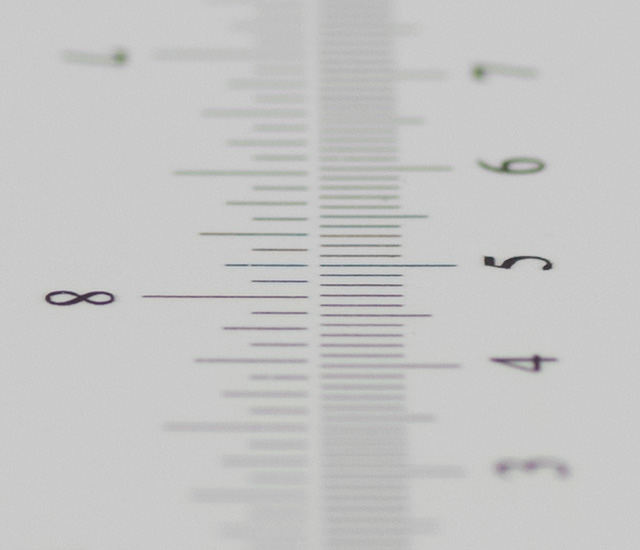|
Panasonic Lumix G 30mm f/2.8 ASPH Mega OIS macro - Review / Test - Analysis |
|
Lens Reviews -
(Micro-)Four-Thirds
|
|
Page 2 of 3

Distortion
The Micro-Four-Third system uses an automatic distortion-correction system thus from a user perspective, there is little to worry about. The final images are essentially free of distortions.
This is mostly true for the uncorrected RAW image as well. Images show just a tiny bit of pincushion distortion which is nothing to worry about is most conditions.
Vignetting
Auto-correction is also applied to the vignetting characteristic. Images shows a very mild light falloff of around 0.5 EV (f-stops) from f/2.8 to f/5.6.
 The RAW vignetting stays within the typical limits. Thus it's high at f/2.8 but drastically reduced at f/4 and roughly in sync with the corrected image from f/5.6 onward.
The RAW vignetting stays within the typical limits. Thus it's high at f/2.8 but drastically reduced at f/4 and roughly in sync with the corrected image from f/5.6 onward.
MTF (resolution)
Macro lenses tend to be sharp beasts and this applies to the Panasonic Lumix 30mm f/2.8 ASPH Mega OIS macro as well. It is actually diffraction-limited because it reaches its peak performance at f/2.8 already. The center quality is excellent at this setting and the borders and corners are easily very good. Diffraction effects start to kick in at f/5.6 but f/8 and f/11 remain usable with good to very good results. f/16 should be avoided and f/22 results in an image soup really (this is a physical limitation).
The tested sample had a good centering quality.
Please note that the MTF results are not directly comparable across the different systems!
Below is a simplified summary of the formal findings. The chart shows line widths per picture height (LW/PH) which can be taken as a measure for sharpness.
If you want to know more about the MTF50 figures you may check out the corresponding Imatest Explanations

Chromatic Aberrations (CAs)
Lateral CAs (color shadows at harsh contrast transitions) are very low at large to medium aperture settings. They increase a bit at very small apertures but, as mentioned, you shouldn't use the lens beyond f/11 anyway.
We used an Olympus camera for testing. Panasonic cameras are automatically correcting CAs under the hood.

Bokeh
Macro lenses are usually used in very shallow depth-of-field situations so the rendition of the out-of-focus blur is an important characteristic. The Panasonic lens is pretty good here albeit not perfect.
The inner zone of out-of-focus highlights is somewhat busy and there's a bit of an outlining effect that increases the more you stop down. The aspherical element is the most likely candidate responsible for this effect.
 The general blur is very smooth both in the image background and foreground.
The general blur is very smooth both in the image background and foreground.

Bokeh Fringing / Longitudinal Chromatic Aberrations (LoCA)
So-called bokeh fringing is an effect that occurs around the focus point (on the Z-axis). It's visible as halos of different colors in out-of-focus areas - magenta (red + blue) in front of the focus point and green beyond.
The Panasonic lens isn't overly fast so this aspect is rather underdeveloped. There are some traces at f/2.8 and a tiny bit at f/4 but this is hardly a show stopper.
|
Move the mouse cursor over the f-stop marks below to observe the respective LoCAs
|
| f/2.8 |
f/4 |
f/5.6 |
|

|
|